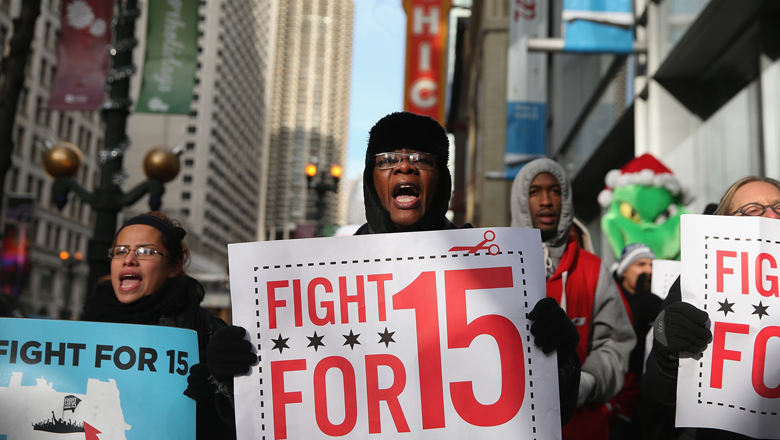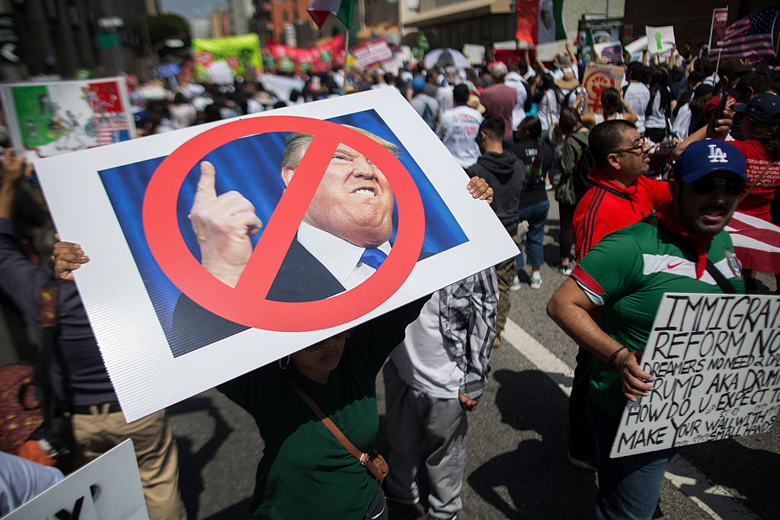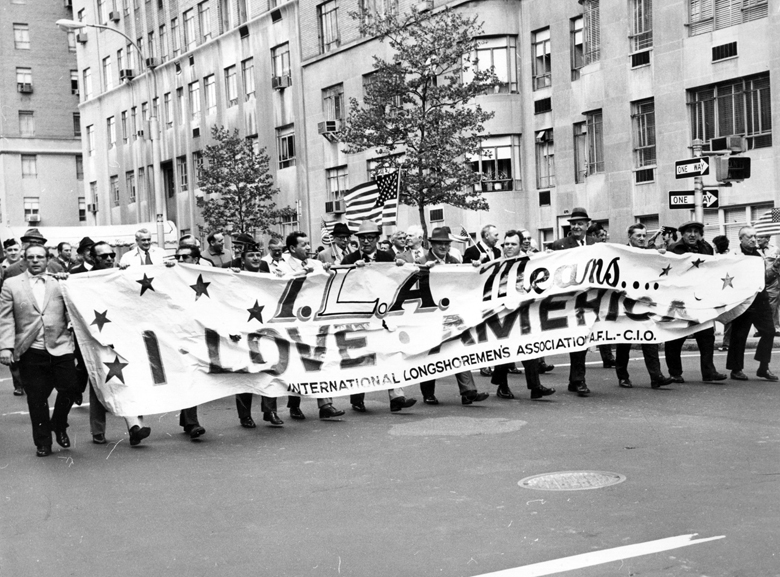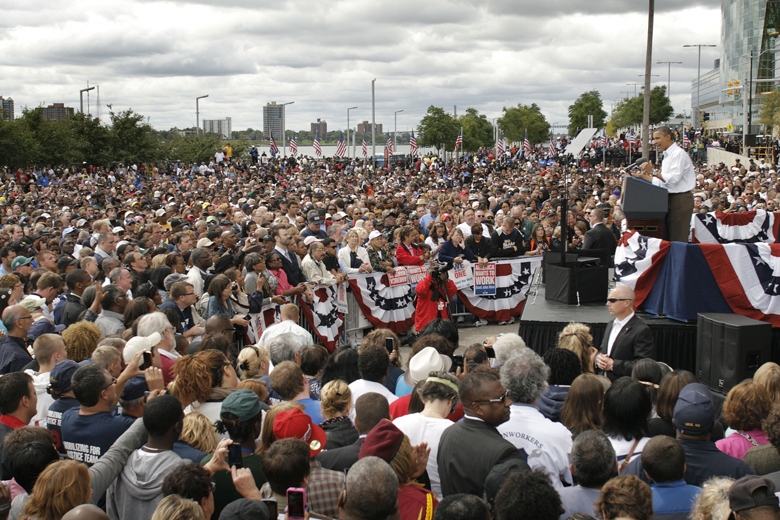
Scott Olson/Getty Images Demonstrators demanding an increase in pay for fast-food and retail workers protest in the Loop on December 5, 2013 in Chicago, Illinois.
Happy Labor Day! Today we celebrate the contribution of all laborers have made in making sure that everyone benefits from their efforts.
The rest of the world celebrates International Workers’ Day, or Labour Day, on May 1, May Day. However, the international date still comes from the struggle of American workers. It is associated with the American labor movement in the late 1800s after violent protests at Haymarket Square in Chicago. Workers around the world now celebrate the holiday with marches and protests in May. However, Labor Day in the United States is the first Monday in September.
In 1921, at a time when the U.S. government was most afraid of violent working-class uprisings, the U.S. government declared May 1 “Loyalty Day.”
From unions to the 40-hour work week, learn more about the history and origins of Labor Day here:
1. It Became Associated With Labor in 1886

The 1886 Haymarket Affair. (WikiMedia)
On May 1-3, 1886, about 250,000 factory workers in Chicago took to the streets to protest long working hours with the rallying cry, “Eight-hour day with no cut in pay.” During this time, Chicago was a major industrial center where German and Bohemian immigrant workers were paid about $1.50 a day, or about $36.65 a day adjusted for inflation. These laborers worked 10-hour shifts 6-days a week, according to Working Hours of the World Unite? New International Evidence of Worktime, 1870-1913.
The Federation of Organized Trades and Labor Unions unanimously set May 1, 1886, as a national day of protest for an 8-hour work day. Although it was a peaceful protest, Chicago police fired on the crowd and killed two workers.
The next day a huge rally to protest the police brutality took place at Haymarket Square in Chicago. At just around 10:30 a.m. as a line of police advanced on the rally, someone threw a bomb at the officers, killing one and wounding 6 more. Police open fired, killing four demonstrators and injuring dozens more.
May Day became a holiday the following year to remember the victims who died while protesting for fair and humane working conditions.
2. It Became an International Holiday

A woman carries a placard critical of Republican presidential candidate Donald Trump during one of several May Day marches on May 1, 2016 in Los Angeles, California. Immigrants, union members, workers and supporters are participating in the annual marches in downtown Los Angeles to call for greater rights for immigrants and improved conditions for workers. (David McNew/Getty Images)
Following the 1886 incident, May Day became an international holiday celebrated by workers and radicals across the world. May Day held particular significance in socialist countries like the Soviet Union and, after 1959, Cuba, who commemorated the day with large parades.
Between April and June of 1919, bombs were sent by radical anarchists to important industrial and elected officials across the country. The event is called the Red Scare of 1919–20, and was spurred by the October Revolution by the Bolsheviks in Russia. According to the Chicago Daily Tribune, at least 36 explosive packages, planned to go off around May Day, were sent to the governors of Pennsylvania, and Mississippi, congressmen and senators from Utah, North Carolina, Washington, Georgia, Pennsylvania, and Alabama, as well as John D. Rockefeller and J.P Morgan Jr. Only 12 were ultimately recovered.
Many of the bombs, including the one which exploded on Attorney General A. Mitchell Palmer’s front porch, found their targets. Palmer wasn’t killed but his neighbors, future president Franklin Delano Roosevelt and his wife Eleanor, barely avoided the blast.
The May Day anarchist bombings were followed a month later by more bombings in June.
All the bombings were coordinated by Luigi Galleani, an Italian anarchist active in the United States, and his followers, “Galleanists.” The bombings led to the Palmer raids where Galleani and many of his followers were arrested and deported.
3. The Events Spurred ‘Loyalty Day’ in America

A group of men representing the International Longshoremen’s Association declare their love for America on a Loyalty Day Parade in New York. (Peter Keegan/Keystone/Getty Images)
In 1921, at a time when the U.S. government was most afraid of violent working-class uprisings spearheaded by foreign radicals, the U.S. government declared May 1 “Loyalty Day.” The holiday did not become an official U.S. holiday until the second red scare when Dwight Eisenhower proclaimed that May 1, 1959, would be the first official Loyalty Day.
According to the legislation:
Loyalty Day is a special day for the reaffirmation of loyalty to the United States and for the recognition of the heritage of American freedom.
Earlier this year, President Trump reminded his followers about Loyalty Day at a 2020 campaign rally celebrating his 100th day in office in Harrisburg, Pennsylvania.
Trump also touched on his lack of legislative achievement, where he blamed the American Constituion for its checks and balances of exectuive power, according to The Guardian. “It’s a very rough system. It’s an archaic system… It’s really a bad thing for the country,” Trump said.
4. ‘American Labor Day’ Is in September

President Barack Obama delivers a speech during a Labor Day event sponsored by the Metro Detroit Central Labor Council on September 5, 2011 in Detroit, Michigan. (Bill Pugliano/Getty Images)
Unlike the majority of the world which celebrates workers on May 1, the United States and Canada celebrate Labor Day on the first Monday of September. Britannica writes:
In 1889 an international federation of socialist groups and trade unions designated May 1 as a day in support of workers, in commemoration of the Haymarket Riot in Chicago (1886). Five years later, U.S. Pres. Grover Cleveland, uneasy with the socialist origins of Workers’ Day, signed legislation to make Labor Day—already held in some states on the first Monday of September—the official U.S. holiday in honour of workers. Canada followed suit not long afterward.
5. It’s Celebrated as ‘the End of Summer’

A woman sits at the beach on Labor Day in Coney Island September 7, 2015 in the Brooklyn borough of New York City. Labor Day signals the traditional, if not the calendar, end of the summer season.
North Americans now view Labor Day as the end of the summer season. Oftentimes it’s seen as the last beach vacation and barbecue time before autumn.
However, without Labor Day, there’d be no time for Labor Day vacations at all. The many laborers in the past not only established 8-hour work days, but also much more, including the 40-hour work week, which was championed by laborists since 1866, reports Business Insider.
The 5-day work week was a product of Henry Ford, founder of Ford Motor Company, who decided to shutdown his factories on both Saturday and Sunday starting in 1926. Soon after, the Amalgamated Clothing Workers of America Union was the first union to demand a five-day work week and get it.
But it wasn’t with the mounting pressure of more laborists that by 1938 the Fair Labor Standards Act set the adoption of a 40-hour work week, two-day weekend nationwide.
